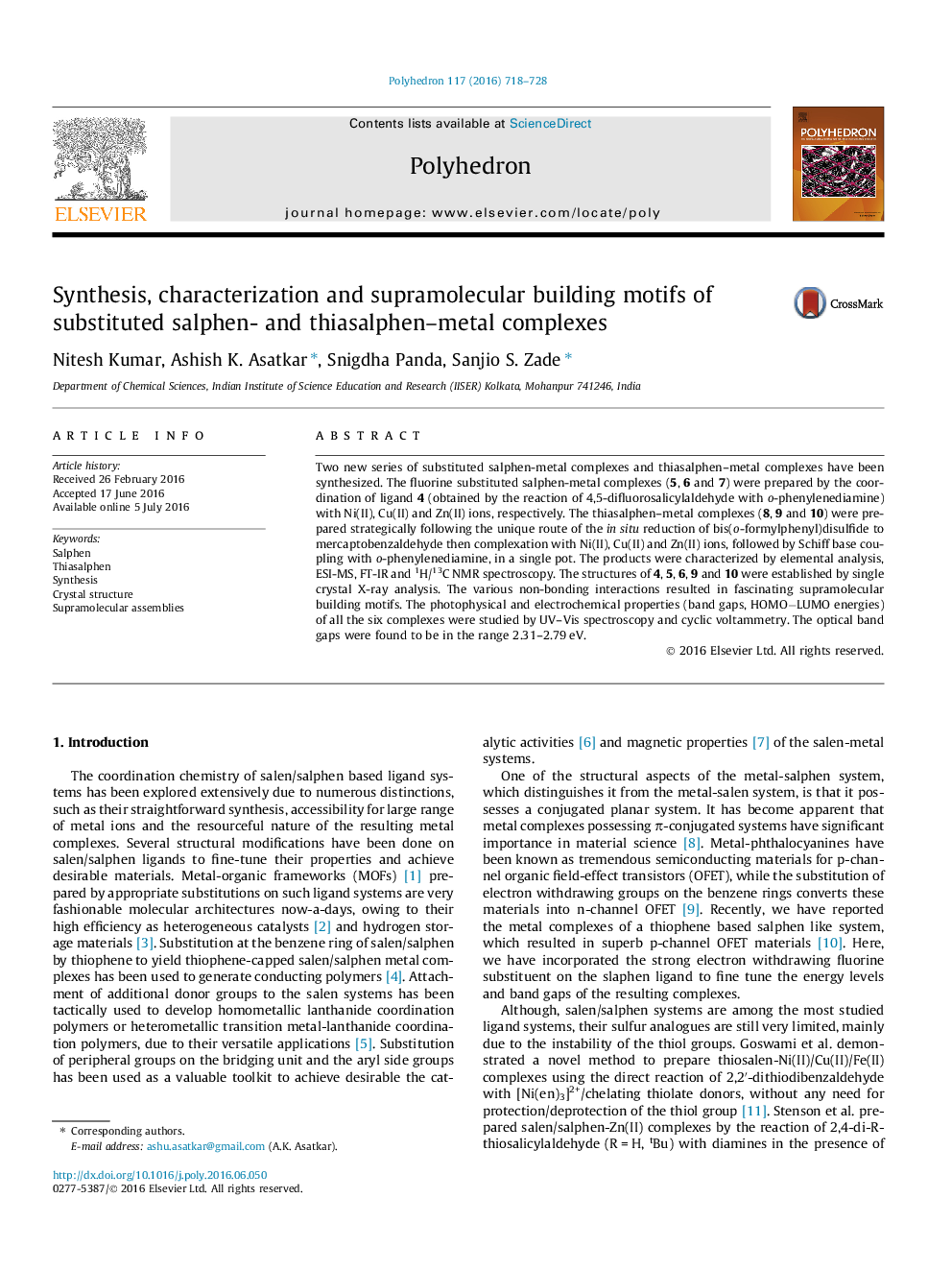| کد مقاله | کد نشریه | سال انتشار | مقاله انگلیسی | نسخه تمام متن |
|---|---|---|---|---|
| 1336260 | 1500223 | 2016 | 11 صفحه PDF | دانلود رایگان |
Two new series of substituted salphen-metal complexes and thiasalphen–metal complexes have been synthesized. The fluorine substituted salphen-metal complexes (5, 6 and 7) were prepared by the coordination of ligand 4 (obtained by the reaction of 4,5-difluorosalicylaldehyde with o-phenylenediamine) with Ni(II), Cu(II) and Zn(II) ions, respectively. The thiasalphen–metal complexes (8, 9 and 10) were prepared strategically following the unique route of the in situ reduction of bis(o-formylphenyl)disulfide to mercaptobenzaldehyde then complexation with Ni(II), Cu(II) and Zn(II) ions, followed by Schiff base coupling with o-phenylenediamine, in a single pot. The products were characterized by elemental analysis, ESI-MS, FT-IR and 1H/13C NMR spectroscopy. The structures of 4, 5, 6, 9 and 10 were established by single crystal X-ray analysis. The various non-bonding interactions resulted in fascinating supramolecular building motifs. The photophysical and electrochemical properties (band gaps, HOMO−LUMO energies) of all the six complexes were studied by UV–Vis spectroscopy and cyclic voltammetry. The optical band gaps were found to be in the range 2.31–2.79 eV.
Two new series of substituted salphen-metal complexes and thiasalphen–metal complexes have been synthesized. The fluorine substituted salphen-metal complexes (5, 6 and 7) were prepared by the coordination of ligand 4 (obtained by the reaction of 4,5-difluorosalicylaldehyde with o-phenylenediamine) with Ni(II), Cu(II) and Zn(II) ions, respectively. The thiasalphen–metal complexes (8, 9 and 10) were prepared strategically following the unique route of the in situ reduction of bis(o-formylphenyl)disulfide to mercaptobenzaldehyde then complexation with Ni(II), Cu(II) and Zn(II) ions, followed by Schiff base coupling with o-phenylenediamine, in a single pot. The products were characterized by elemental analysis, ESI-MS, FT-IR and 1H/13C NMR spectroscopy. The structures of 4, 5, 6, 9 and 10 were established by single crystal X-ray analysis. The various non-bonding interactions resulted in fascinating supramolecular building motifs. The photophysical and electrochemical properties (band gaps, HOMO−LUMO energies) of all the six complexes were studied by UV–Vis spectroscopy and cyclic voltammetry. The optical band gaps were found to be in the range 2.31–2.79 eV.Figure optionsDownload as PowerPoint slide
Journal: Polyhedron - Volume 117, 15 October 2016, Pages 718–728
